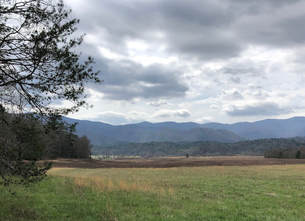|
4/8/2020 Enough Already! Main entrance NY Public Library. Main entrance NY Public Library. In a interview on the History Author Show podcast about the Durant Family Saga, the interviewer asked me a question that had me stumped: If you could fill any gap about this fascinating family after three novels, what would you choose? Of course, there’s more I could have uncovered about the Durants to turn my trilogy into a series. I've received emails from people who were reading my books and my research journey blog. They offered me tidbits of information, leads to follow, contact information of descendants with interesting histories of their own. But for me, enough was enough. I’d spent five years of my life researching this Gilded Age family. I had traveled to several libraries and museums on the east coast of the U.S., and visited the Isle of Wight in England. At some point authors of historical fiction rely on conjecture. It is the lens we use to offer our interpretation of events given the information we have on hand. Indeed, at the end of the trilogy, in the novel, The Night is Done, the narrator, a historian, remarks: I’m sure that in the future, someone will come along and find gaps in my research. It’s the historian’s curse. Our job is to sift through the tall tales and determine what’s worth including and what’s best left as fodder for others to chew on. The truth is found in the abyss of the unknown. If my readers believe it’s me, the author saying these words, they aren’t far off. I put myself in the head of the narrator, a historian, tracking down and interviewing an elderly member of the Durant family, and by the time I was done writing the last book in the trilogy, it was how I felt. We read historical fiction to discover history in an interesting and entertaining fashion. Authors of this genre are all too aware that some research could take up a lifetime and if we wait for all the facts to be known, the stories would never get written. This is especially true as libraries, newspapers and museums digitize their collections making them more accessible to the public, uncovering new details and facts about historical events along the way. There are always new stories to tell, and I have moved on to tell them. My latest work in progress is about the men of the US Civilian Conservation Corps, who planted over a billion tree seedlings in the US during the Great Depression. The story revolves around the families who once lived in Cades Cove, a cultural heritage site at the Great Smoky Mountains National Park. After doing research about these families, I felt compelled to tell their stories. And I hope to have this novel published soon.You can read the first couple of chapters here.  The sound of a stream plunging over a precipice is one sign of spring and on my recent visit to the Smoky Mountains National Park there were plenty of gushing waterfalls; I hiked up to Spruce Flats to get this view.  I went to the Smoky Mountains National Park to conduct research for a novel and to write about place, exploring the mountains in spring. I was especially interested in the area around the Tremont Institute in the park. It was once a thriving lumber community and one of the more famous inhabitants was William Walker. He owned most of Walker Valley before the Smoky Mountains National Park was formed, and this is where my fictional family lives. What drew me to their story is the old growth, or what is left of it at the Tremont Institute in the park. William Walker settled here in the 1850s and as lumber operations closed in on his valley, he tried to keep his old growth woods from the clutches of the Little River Lumber Company. William lived a colorful life. According to his descendants, he had three wives and some estimate he sired over 20 children. He hung on to his land until 1918, selling it off to the owner of the Little River Co. on his death bed with the understanding that the old trees would be spared. What he never knew was that eventually his trees were cut, post-mortem, by the company and that he was under paid for the land. A few miles down the road from Tremont and Walker Valley is the only cultural heritage site in the park - Cades Cove. This eleven mile circuit holds what remains of an entire community that once lived there: homes, corn cribs, barns, smoke and spring houses. The people that lived in Cades Cove had full, industrious lives.  A cove is another name for valley. Large area of flat land between mountains. A cove is another name for valley. Large area of flat land between mountains. Their economy was based on a bartering system with the nearby cities and towns. And they had plenty to barter before the woods were ravaged by blight, forest fire, and habitat destruction. Ginseng, chestnuts, corn, and cattle were just some of the products the people of Cades Cove bartered and sold at markets in Maryville and Knoxville, TN. Luckily local residents (many descendants) from nearby Townsend, Tennessee advocated for preserving the architecture of Cades Cove. It is the only area in the park where you can find everything intact. Which was fortunate because when the government started acquiring land for the park in the mid-1920s they tore down or let buildings rot after their occupants moved out. Just like the natural areas in the park, Cades Cove is a great place to rocket the imagination. I also found a plethora of reading material at the Smoky Mountains Heritage Museum in Townsend, first hand accounts from people who grew up in the region before their families were forced to move because of the National Park in the mid 1930s. These books are gold mines of information, tall tales, and stories about the families who lived there, their hardships, feuds, and industry. Before a fungus blighted the Chestnut trees, children would go deep into the woods to collect the nuts and sell them at the local stores. They had a miller who came in from the fields at the sound of a bell to mill corn for customers who stopped in with a sack of kernels. His was an important job as corn was a family staple and wheat was hard to grow so flour was usually shipped in and store bought. The families raised pigs, notched their ears to identify them and let them roam the hills. At harvest time they were lured in with salt and nuts. The meat was kept in a smokehouse and slabs taken off throughout the winter. Game was scarce by the early 20th century due to over hunting. Hunters were lucky to get a 'Gobbler' roosting in a tree, or squirrel meat. I found no references for deer hunting but Elk now pasture in the coves and there are signs everywhere to be aware of them while driving. I've visited the park twice and have yet to see one. But I'll be back for the next season: summer and maybe I'll get lucky. Connect here for my next post on the history of lumber industry in the Smoky Mountain region.
|
AuthorSheila Myers is an award winning author and Professor at a small college in Upstate NY. She enjoys writing, swimming in lakes, and walking in nature. Not always in that order. Archives
April 2024
CategoriesAll Adirondacks Algonquin Appalachia Award Cades Cove Canada Chestnut Trees Christmas Civilian Conservation Corps Collis P. Huntington Creativity Doc Durant Durant Family Saga Emma Bell Miles Finger Lakes Great Depression Hell On Wheels Historical Fiction History Horace Kephart Imagination National Parks Nature Publishing Review Screenplay Short Story Smoky Mountains Snow Storm Stone Canoe Literary Magazine Thomas Durant Timber Wilderness World War II Writing |
|
|
All materials Copyright 2022
Any reproduction, reprint or publication without written consent of author prohibited. |

 RSS Feed
RSS Feed